Franca López Barbera
![]() is an Argentinian design researcher and editor based in Berlin. Her work addresses the power dynamics that configure and are configured by design, particularly at the intersection of nature, coloniality, gender, and ethics with a special interest in consent. She is a PhD candidate at the Institute of History and Theory of Architecture, TU Braunschweig. In her research, she draws from local stories, feminist posthumanities, and decolonial theory to examine more-than-human entanglements in material/spatial practices.
is an Argentinian design researcher and editor based in Berlin. Her work addresses the power dynamics that configure and are configured by design, particularly at the intersection of nature, coloniality, gender, and ethics with a special interest in consent. She is a PhD candidate at the Institute of History and Theory of Architecture, TU Braunschweig. In her research, she draws from local stories, feminist posthumanities, and decolonial theory to examine more-than-human entanglements in material/spatial practices.
She writes
- 2025, Untangling More-Than-Human Design Words and Worlds: Cautionary Insights and Considerations. In Ibach, Augsten, and Vogelsang (Eds.), What could possibly go wrong? Impact and Consequences in Design. TUD press.
- 2025, Does the Tree Say No? On Uncertainty, Silence, and Consent. In Bieling, Christensen, and Conradi (Eds.), NERD - New Experimental Research in Design III: Positions and Perspectives, Birkhäuser.
- 2024, When a Tree Says No: Towards a More-Than-Human Consent Approach for Design. In Gray, Ciliotta Chehade, Hekkert, Forlano, Ciuccarelli, and Lloyd (Eds.), DRS2024: Boston, 23–28 June, Boston, USA.
- 2023,
Campo de Torres. In Wustavo Quiroga (Ed.), Cristián Mohaded: Territorio Híbrido.
![]()
![]()
*If the image looks all pixelated, just grab and move the edge of your browser window like you're resizing it, and it'll fix itself.
Where does the Monte (bush) end and the basket begin? Where do the artisan's hands end and the designer's begin? Campo de Torres (Field of Towers) is a monumental landscape in which the edges are understood, not as a rigid limit, but as a dynamic space. Here, the generation of things happens through the reciprocal relationship between people, materials, and the forces of nature. Each piece is a reflection of its own becoming and, if we look in all directions, we can sense the stories they tell us.
The simbol captures the energy of the sun and extends it through its fibres, turning the bright, tender green of the plant into shades of sandy yellow. Thus, as a kind of active declaration and testimony of time, the plant reveals the harvest season through its colour. Through loose and tight weaves, the interwoven pattern of the baskets evokes a swaddling movement; the alternating yet methodical rhythm of the hands that made them. When an artisan weaves, they inscribe the territory, its relationships, and its history within the pattern, while simultaneously releasing the scent of a rusty sunset through every fold of the fibre. The simbol as a plant and as a technique, is a technology-memory that stores and transfers a making expertise and a knowledge specific to the Monte.
These textile giants are the crystallisation of a unique material language creation; one that positions design at the right distance between transgression and tradition. The dialogue of multiple knowledges not only pushes formal horizons further but also establishes pacts of respect between the designer, the artisan, and nature. Design is, then, a situated activity that configures particular experiences, values, and ways of relating. Rooting it in the territory through collaborative processes amplifies design’s potential for the creation and coexistence of multiple possible worlds.
ESP/
¿Dónde termina el monte y empieza el canasto? ¿Dónde terminan las manos del artesano y empiezan las del diseñador? Campo de Torres es un paisaje monumental en el que los bordes no se entienden como un límite rígido sino como un espacio dinámico. Aquí, la generación de las cosas sucede a través de la relación recíproca entre las personas, los materiales y las fuerzas de la naturaleza. Cada pieza es el reflejo de su propio devenir y, si miramos en todas las direcciones, alcanzamos a sentir las historias que nos cuentan.
El simbol atrapa la energía del sol y la extiende por sus fibras para transformar el verde tierno y brillante en un amarillo arenoso. Así, como una suerte de declaración activa que atestigua el transcurso cíclico del tiempo, la planta nos revela el momento de cosecha según su color. El tejido intercalado de los canastos evoca, en su trama amplia y apretada, el movimiento envolvente y el ritmo alternado pero metódico de las manos que lo conformaron. Cuando un artesano teje, inscribe el territorio, sus relaciones y su historia en la trama, a la vez que deja que de cada pliegue de la fibra se desprenda el olor del atardecer oxidado. El simbol, como planta y como técnica, es una tecnología-memoria que almacena y transfiere un saber hacer y un conocimiento propio del monte.
Estos gigantes textiles son la cristalización de un proceso de construcción de un lenguaje material particular, en el que el diseño se posiciona a una distancia justa entre la transgresión y la tradición. La puesta en diálogo de múltiples saberes no solo empuja más allá los horizontes formales, sino que también establece pautas de respeto entre el diseñador, el artesano y la naturaleza. El diseño es, pues, una actividad que configura experiencias, valores y modos de relacionarse particulares. Arraigar el diseño al territorio desde una perspectiva fundamentalmente colaborativa y procesual permite, entonces, amplificar su potencial hacia la creación y coexistencia de múltiples mundos posibles.
- 2022, When a Stone Says No. Futuress.
- 2021, When a Tree Says No. Futuress.
- 2019,
Spinning Triangles. Ignition of a School of Design. (Ed.)
![]()
![]()
![]()
![]()
*If the image looks all pixelated, just grab and move the edge of your browser window like you're resizing it, and it'll fix itself.
Publication, August 2019. Only edition of 150 copies. Riso printed by We Make It, Berlin for SAVVY Contemporary – The Laboratory of Form-Ideas, Berlin.
Spinning Triangles was a project from SAVV Contemporary in Berlin seeking to challenge and act against the inherent, neocolonial power structures in design practices, theory, and teaching. This is a collective publication of what happened.
Editors: George Lynch, Franca López Barbera, Eloise Maltby Maland
Editorial Team: Michalis Fountedakis, Eliza Levinson
Publication team: Clara Saez Calabuig, Jasmina Al-Qaisi, Olga Konik, Andréa Anzala
Layout: Garth Roberts
Cover Design: X88
Contributors: Katharina Birkmann, Marlene Kargl, Shreyasi, Thomas Lindenberg, Maria Camilo, Mariama Sow, Dior Thiam, Juliette Dana, Ugur Latif Çelebi, Alejandra Alvarez, Samira Hodaei, Eeva Rönka, Orakle Ngoy, Andréa Anzala, Frida Robles, Tshibwabwa Mutamba, Clara Saez Calabuig, Jasmina Al-Qaisi, Clara Brandt, Noara Quintana, Emilia Escobar, Olga Konik, Ozman Mukhtar, Gabriel Gordon, Khaleb Krissy Brooks, Michalis Fountedakis, Franca López Barbera, Fanny Souade-Sow, António Mendes, Patricia Sayuri, Valerie Kong, Galina Kruzhilina, Eliza Levinson, George Lynch, Garth Roberts, Jean-Jacques Tankwey, Jonathan Bongi, Jean Kamba, Rita Mayala, Elie Mbansing, Grace Mujinga, Koko:Lema-Diandandica, Lia Krucken, Caroline Neumann, Elsa Westreicher, Arlette-Louise Ndakoze, Elia Diane Fushi Bekene / Selflovetribute.
![]()
- 2019,
When the Tide Rises
![]()
*If the image looks all pixelated, just grab and move the edge of your browser window like you're resizing it, and it'll fix itself.
WHEN THE TIDE RISES
Contribution for Spinning Triangles — Ignition of a School of Design, 2019.
Poem: Franca López Barbera
Image: Pati Sayuri
[en] I am the mother of all humanity. I am Mother Earth, the Pachamama. There is no center; the center is everywhere. There is no beginning or end; the circumference is nowhere. I am the rivers, the trees, the lakes, the animals, the seas, the flowers, the deserts, and the mountains.
The first sip is for Pacha, to whom everything belongs. The soil we step on is water and earth, it is deep and receptive. Water is fertility between the sowing and the harvest. There is no value in connecting with the water if her source is not acknowledged. Water comes from the eyes of the Pachamama.
Water is never neutral or passive. She shakes with the wind and, in the sky, she is lightning and thunder. She overflows in flood and, in a moment of unlimited intensity, she transforms the world .
Enojate, hermana. Rebele-se irmã. Sister, get angry. Fâche-toi, soeur. Let the tide rise and your commotion flood valleys. We’ll all come to help, we’ll come out from the soil like the fruits between the mountains. Take the harvest ‘cause the grass is rotten. Abolish forms, disintegrate dualisms, cross all borders, wipe out everything, and meanwhile we’ll celebrate. Because your storm is a party, and your water cleanses and purifies.
and
speaks about it.
- 2024, When a Tree Says No: Towards a More-Than-Human Consent Notion for Design. DRS2024: Boston, 23–28 June, Boston, USA.
- 2023, When a Tree Says No: Towards a Consent Framework for Design-Nature Relationships. NERD–New Experimental Research in Design, 4–5 May, Berlin University of the Arts, Germany.
- 2022, Consent for design-nature relationships. Counterparts: Exploring Design Beyond the Human, Swiss Design Network Research Conference, 27–28 October, Zurich University of the Arts, Switzerland.
- 2022, On Sharing and Stone Walls. (Re-)learning the Archive, 8 March, Linnaeus University, Växjö, Sweden.
- 2021, DISEÑO: Thinking the World in Spanish (Panel). Instituto Cervantes & the London Design Biennale, 22 June, London, UK.
- 2021, Deforestation as Epistemicide. Against the Grain, Futuress.
In 2021, she curated
Monte Abierto
![]()
![]()
*If the image looks all pixelated, just grab and move the edge of your browser window like you're resizing it, and it'll fix itself.
Monte Abierto is an invitation to experience the making of a shared territory in dialogue. In this installation, the designer Cristián Mohaded examines the resonance of design from his relationship with the artisan Lorenzo Reyes and the Simbol, a plant that grows in the Calchaquí Valleys in Catamarca, a province in the northwest of Argentina, from which both come from.
Between rivers and mountains, shrubs grow wild on the Monte (the bush), forming scattered islands of dense coloured clumps from green to gold; a desert-like landscape of bright clouds and warm rusty sunsets that Lorenzo visits every three months. “Let’s go to the material,” he says, and from this encounter with the Simbol, relationships begin to be woven. For almost a decade, Cristián and Lorenzo maintain a collaborative and experimental practice built upon an ongoing process of making agreements, of forming a common language, and pacts of respect between them, the Simbol, and the Monte.
Simbol is both the plant and the basket weaving tradition of the province of Catamarca. Although Simbol fibres can be cut and woven at any time of the year, in summer they are given over to the cows, horses, and donkeys that come to the Monte to feed on them. In winter, however, the cool wind dries the bright, tender green of the plant into shades of sandy yellow. What’s more, according to the minerals of the soil, red and orange spots can appear on the fibres. For Lorenzo, these are not peripheral details but rather nature setting the pace of his practice — a way of relating to the material as a source of knowledge and as a bearer of the identity of a territory. "Mother Nature offers us everything, we just have to go to the fields and work with our hands," he says. The Simbol thus becomes a technology-memory that stores and transfers a making expertise and a language specific to the Monte. The Monte is, then, not simply a bounded geographical space, but the socio-ethico-material support of the relations that emerge from and within it.
The meeting place for Cristián and Lorenzo is at the border between craft and design. For them, referring to their disciplines as two distinct fields does not represent a rigid division but the possibility of creating (designing) their own making together through the dialogue of their knowledges. Dialogue appears here as a committed technology towards finding a shared vision, a shared language, a shared practice, a shared world. In that sense, design is a situated activity that configures values, ways of relating, identities, and territories. For Cristián, to ground his work to a place echoes as a fundamental principle for a sustainable and respectful practice, as well as a strategy to place design at the appropriate distance and thus amplify its potential towards the creation and coexistence of multiple possible worlds.
Monte Abierto is the bringing forward of a making in which the generation of things happens through the reciprocal and embodied relationship between people, materials, and the forces of nature. In the installation, the objects present themselves as the reflection of their own becoming; a threading that emerges from the polyvocal dialogue between the designer, the artisan, the Simbol, the Monte, the animals, the wind, and the sun. To enter the Monte, then, is not just an invitation to the landscape but to an epistemic orientation and a disposition to see and do things otherwise — a perspective in which the material and the immaterial are mutually constituted.
Monte Abierto is the disclosure of Cristián and Lorenzo’s shared territory and an invitation to their conversation as landscape — a world made through dialogue and a dialogue made world.
Designer: Cristián Mohaded
Artisan: Lorenzo Reyes
Curator: Franca López Barbera
Light Design: Arturo Peruzzotti
Project Team: Josefica Roca, Gonzalo Kaiser, and Franco Chimento
Supporting Bodies: Argentine Ministry of Foreign affair, International Trade, and Worship and The Embassy of Argentina to the UK.
, the Argentinian pavilion for the London Design Biennale. She is a contributing editor at Bikini Books, fellowship mentor of Unwired Currents–Imagining Technologies Otherwise, and teaches
design theory
DESIN IN MANY WORDS: Reading, writing, and talking design across positions and contexts
MA, Winter Semester 26/26
Design is neither singular nor neutral. Yet its mainstream history has often been told as if it were—through universalist, modernist, and human-centred narratives that obscure the multiplicity of perspectives, practices, and struggles shaping it. In reality, design is a situated practice that both shapes and is shaped by the political, economic, and cultural forces of its time. How do different positionalities reflect the complexity of design in the present? And how can we learn to read, write, and discuss design across differences—without erasing them?
Today, a growing set of critical approaches in design research and practice is challenging its modern legacy and Anglo-European biases by introducing alternative roles, ontologies, and epistemologies of design. These perspectives reveal design as a political technology—a field entangled with histories of colonialism, capitalism, racism, patriarchy, and environmental exploitation, yet also a site for imagining and enacting otherwise. This means recognising design’s complicity in systems of oppression and privilege while tracing counter-histories and alternative imaginaries that resist them.
This seminar approaches design as a contested territory, where knowledges and practices are negotiated across geographies, worldviews, and power structures. Through weekly readings, writing, and discussion, we will explore intersections between design and feminist, decolonial, anti-racist, queer, posthuman, and Indigenous perspectives—touching on areas such as design politics, design and gender, decolonising design, pluriversal design, more-than-human design, ontological design, and speculative design. Rather than seeking one “right” definition of design, we will practice recognising its many implications, sharpening our ability to situate ourselves within them and developing the critical and contextual awareness needed to navigate and contribute to design thinking and practice in more accountable, just, and transformative ways.
DESIGNING RELATIONALITY: More-than-human perspectives and practices
BA, Winter Semester 26/26
Wildfires rage, species vanish, and entire ecosystems collapse—yet, much of contemporary design still centres select human needs, reinforcing extractive, market-driven solutions that exploit natures and peoples alike, especially in the Global South. Since its inception, design theory and practice have been governed by rationalist, technocratic, and human-centred perspectives that treat “nature” as something to be fixed, managed, or optimised, always from the outside. But human activities have profoundly shaped the planet, blurring the very boundaries between what we call “natural” and “artificial.” If these categories no longer hold, how must we rethink our ideas of humans, nature, and technology—and, with them, the role of design?
The concept of the more-than-human builds on posthumanist thought, which challenges anthropocentric notions of autonomy and human exceptionalism. Posthumanism recognises that agency is not exclusive to humans but shared among plants, animals, rivers, bacteria, algorithms, satellites, things, materials, etc., all of which co-create the worlds we inhabit. Simply put, more-than-human refers to that which is not only human (it includes and exceeds it) and is constituted by humans and nonhumans and their interactions (e.g., a more-than-human world). While posthumanism critiques modern human/nature, culture/nature, and nature/technology dualisms, more-than-human design brings these insights into practice, expanding design’s scope to include these nonhuman entities not as background, tool, or resources but as stakeholders and active participants in design activities and processes. This approach invites designers to work in ways that acknowledge relationality and interdependence and address the ethical and political implications of such entanglements.
This seminar takes a critical and justice-oriented approach, moving beyond hegemonic modernist frameworks toward more-than-human perspectives in design. Drawing from Indigenous scholars, feminist posthumanities, and decolonial thought, we will explore design as a relational practice within an interdependent world of humans and nonhumans. We will question inherited Western dualisms and investigate how material agency, multispecies relations, and distributed networks of actors shape our social and political realities. What does it mean to design with and for the more-than-human world? How can we reimagine design ethics and politics when agency is shared across humans and nonhumans? How can design attend to the urgent socio-ecological crisis without reproducing the very structures of inequality and exploitation upon which it was built?
THE DESIGN OF NATURE & THE NATURE OF DESIGN
BA, Winter Semester 24/25 and Sommer Semester 2025
What do we mean when we talk about nature? Is it something separate from humans, or is that very distinction itself a product of design? And, what is design, really? Is it something only humans do or a broader process that shapes us back? In this seminar, we’ll dive into these questions by examining the historical conditions and underlying logics that continue to shape prevailing notions of design, nature, and their relation until today. We’ll trace how design developed alongside modern practices that framed nature as a resource to be exploited and transformed through technology. At the same time, we’ll challenge this legacy by considering alternative approaches that honour local, non-exploitative ways of engaging with the natural world.
Design isn’t just about making objects, experiences, or environments; it’s a world-making activity that configures our values, ways of being and relating. Far from neutral, modern design built on the idea of commanding nature to serve capitalist modes of production, reducing it to a mere commodity. Yet, “nature” is not a fixed, objective reality; it’s a concept historically shaped by patriarchal and colonial interests. The climate breakdown and today’s conflicts over resources reflect deeper clashes between different ways of understanding and relating to nature: between those who treat it as an exploitable object and those who view it as a living, active subject with which we can build reciprocal relationships.
Departing from an ontological perspective of design, this seminar will unpack these tensions by drawing from ecofeminism, decolonial theory, Indigenous thought, and feminist posthumanisms. We’ll critically examine how power, gender, and race have shaped (and continue to shape) design’s relationship with nature—and imagine how it could be otherwise.
at FH Potsdam.
In a previous storyline, Franca has delved into
other realms of design,
designing for fashion labels Alexander McQueen, Prabal Gurung and developing
products and materialities
![]()
exhibited her works,
![Sarga Stool at Eyes on the world: un rendez-vous argentin à Paris, Gallery Bensimon, Designer’s Day 2013, Paris.]() worked for
worked for
artists
![]()
![]()
![]() , and collaborated with non-profits. Franca studied Industrial Design at FADU–University of Buenos Aires︎and holds an
, and collaborated with non-profits. Franca studied Industrial Design at FADU–University of Buenos Aires︎and holds an
MSc. in Design Research
![]() from the Anhalt University with the Bauhaus Foundation in Dessau and the Humboldt University in Berlin.
from the Anhalt University with the Bauhaus Foundation in Dessau and the Humboldt University in Berlin.
Franca López Barbera
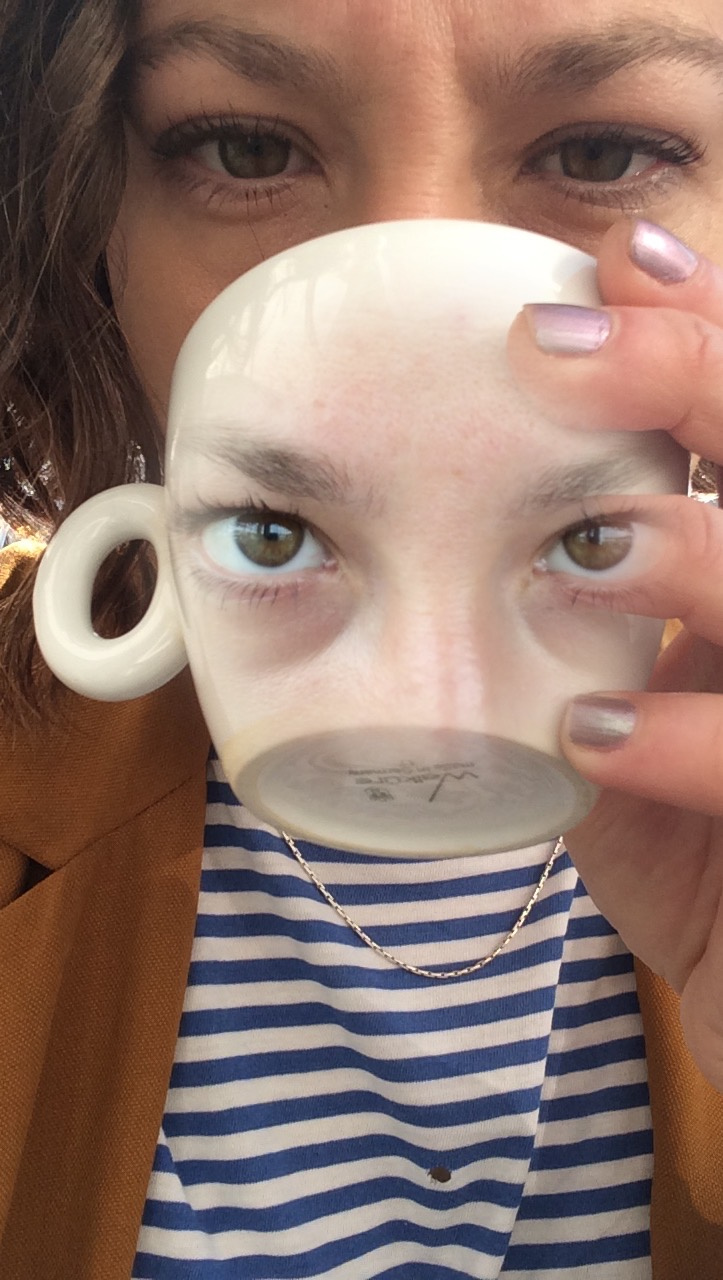
She writes
- 2025, Untangling More-Than-Human Design Words and Worlds: Cautionary Insights and Considerations. In Ibach, Augsten, and Vogelsang (Eds.), What could possibly go wrong? Impact and Consequences in Design. TUD press.
- 2025, Does the Tree Say No? On Uncertainty, Silence, and Consent. In Bieling, Christensen, and Conradi (Eds.), NERD - New Experimental Research in Design III: Positions and Perspectives, Birkhäuser.
- 2024, When a Tree Says No: Towards a More-Than-Human Consent Approach for Design. In Gray, Ciliotta Chehade, Hekkert, Forlano, Ciuccarelli, and Lloyd (Eds.), DRS2024: Boston, 23–28 June, Boston, USA.
- 2023,
Campo de Torres. In Wustavo Quiroga (Ed.), Cristián Mohaded: Territorio Híbrido.
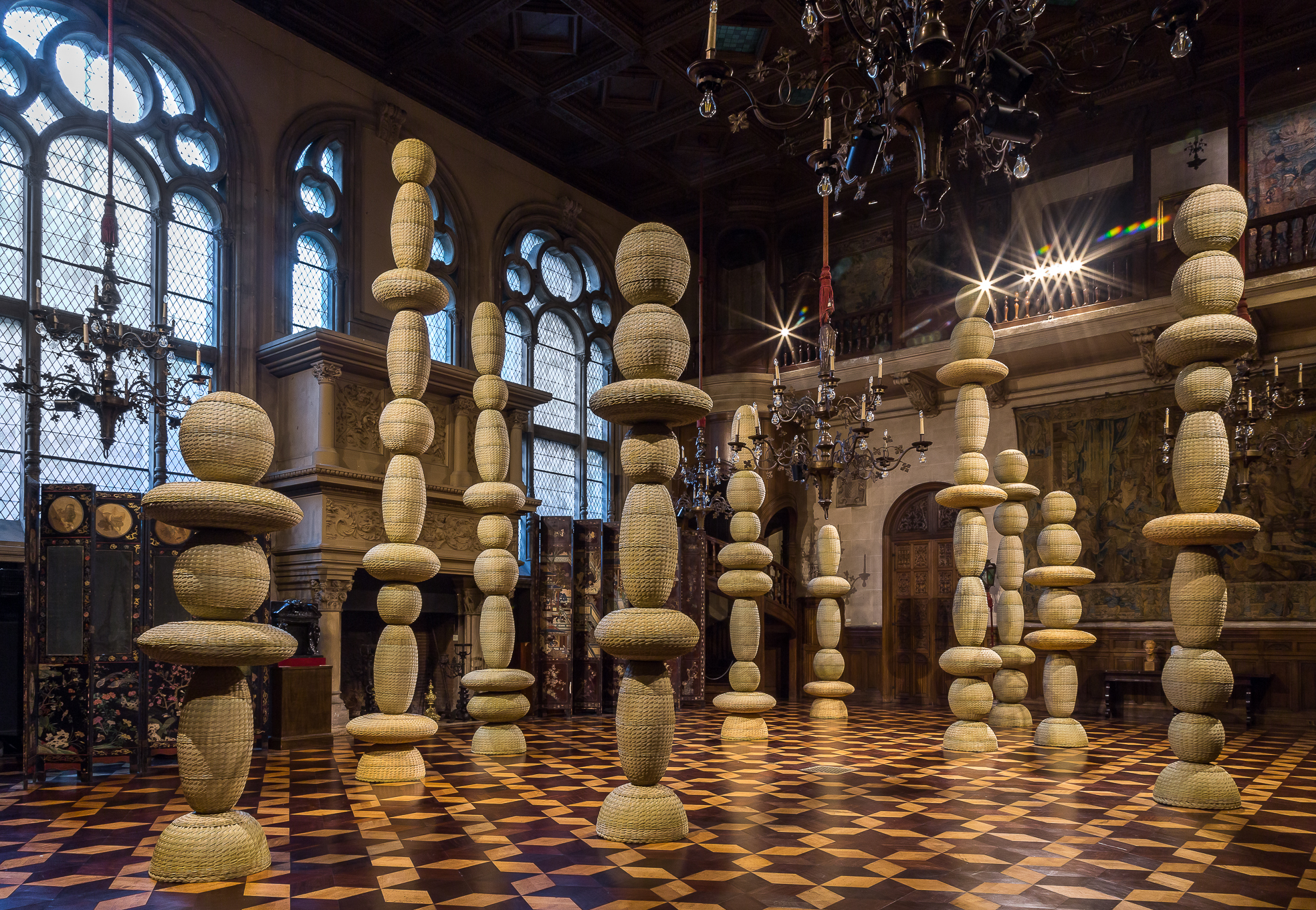
*If the image looks all pixelated, just grab and move the edge of your browser window like you're resizing it, and it'll fix itself.
Where does the Monte (bush) end and the basket begin? Where do the artisan's hands end and the designer's begin? Campo de Torres (Field of Towers) is a monumental landscape in which the edges are understood, not as a rigid limit, but as a dynamic space. Here, the generation of things happens through the reciprocal relationship between people, materials, and the forces of nature. Each piece is a reflection of its own becoming and, if we look in all directions, we can sense the stories they tell us.
The simbol captures the energy of the sun and extends it through its fibres, turning the bright, tender green of the plant into shades of sandy yellow. Thus, as a kind of active declaration and testimony of time, the plant reveals the harvest season through its colour. Through loose and tight weaves, the interwoven pattern of the baskets evokes a swaddling movement; the alternating yet methodical rhythm of the hands that made them. When an artisan weaves, they inscribe the territory, its relationships, and its history within the pattern, while simultaneously releasing the scent of a rusty sunset through every fold of the fibre. The simbol as a plant and as a technique, is a technology-memory that stores and transfers a making expertise and a knowledge specific to the Monte.
These textile giants are the crystallisation of a unique material language creation; one that positions design at the right distance between transgression and tradition. The dialogue of multiple knowledges not only pushes formal horizons further but also establishes pacts of respect between the designer, the artisan, and nature. Design is, then, a situated activity that configures particular experiences, values, and ways of relating. Rooting it in the territory through collaborative processes amplifies design’s potential for the creation and coexistence of multiple possible worlds.
ESP/
¿Dónde termina el monte y empieza el canasto? ¿Dónde terminan las manos del artesano y empiezan las del diseñador? Campo de Torres es un paisaje monumental en el que los bordes no se entienden como un límite rígido sino como un espacio dinámico. Aquí, la generación de las cosas sucede a través de la relación recíproca entre las personas, los materiales y las fuerzas de la naturaleza. Cada pieza es el reflejo de su propio devenir y, si miramos en todas las direcciones, alcanzamos a sentir las historias que nos cuentan.
El simbol atrapa la energía del sol y la extiende por sus fibras para transformar el verde tierno y brillante en un amarillo arenoso. Así, como una suerte de declaración activa que atestigua el transcurso cíclico del tiempo, la planta nos revela el momento de cosecha según su color. El tejido intercalado de los canastos evoca, en su trama amplia y apretada, el movimiento envolvente y el ritmo alternado pero metódico de las manos que lo conformaron. Cuando un artesano teje, inscribe el territorio, sus relaciones y su historia en la trama, a la vez que deja que de cada pliegue de la fibra se desprenda el olor del atardecer oxidado. El simbol, como planta y como técnica, es una tecnología-memoria que almacena y transfiere un saber hacer y un conocimiento propio del monte.
Estos gigantes textiles son la cristalización de un proceso de construcción de un lenguaje material particular, en el que el diseño se posiciona a una distancia justa entre la transgresión y la tradición. La puesta en diálogo de múltiples saberes no solo empuja más allá los horizontes formales, sino que también establece pautas de respeto entre el diseñador, el artesano y la naturaleza. El diseño es, pues, una actividad que configura experiencias, valores y modos de relacionarse particulares. Arraigar el diseño al territorio desde una perspectiva fundamentalmente colaborativa y procesual permite, entonces, amplificar su potencial hacia la creación y coexistencia de múltiples mundos posibles.
- 2022, When a Stone Says No. Futuress.
- 2021, When a Tree Says No. Futuress.
- 2019,
Spinning Triangles. Ignition of a School of Design. (Ed.)
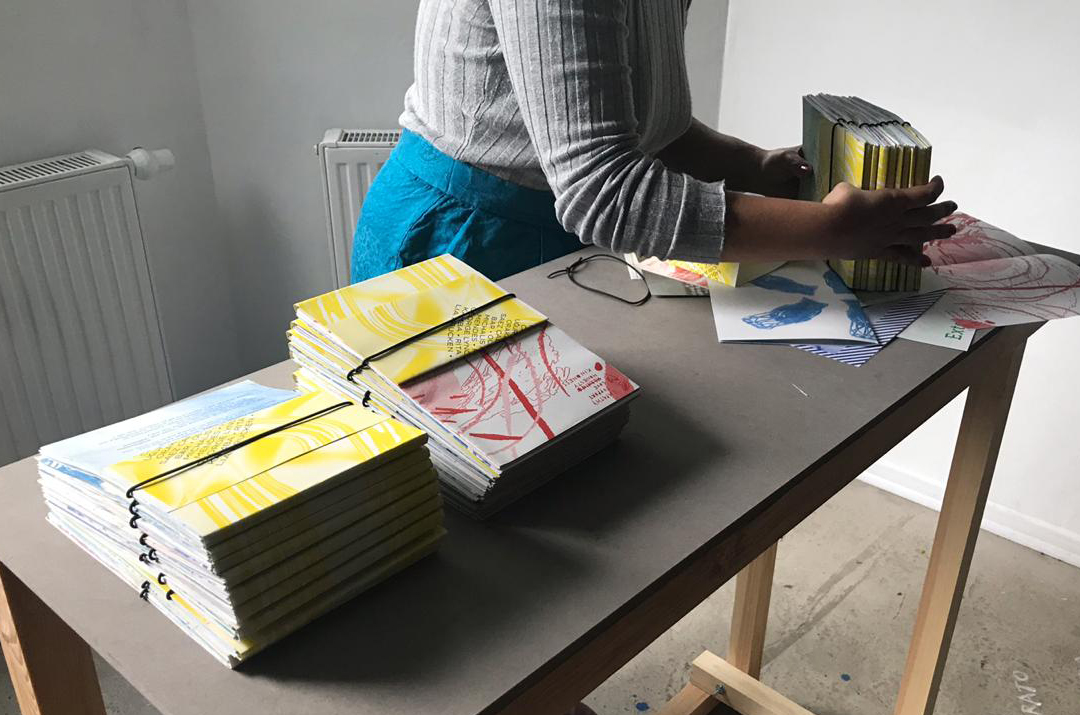
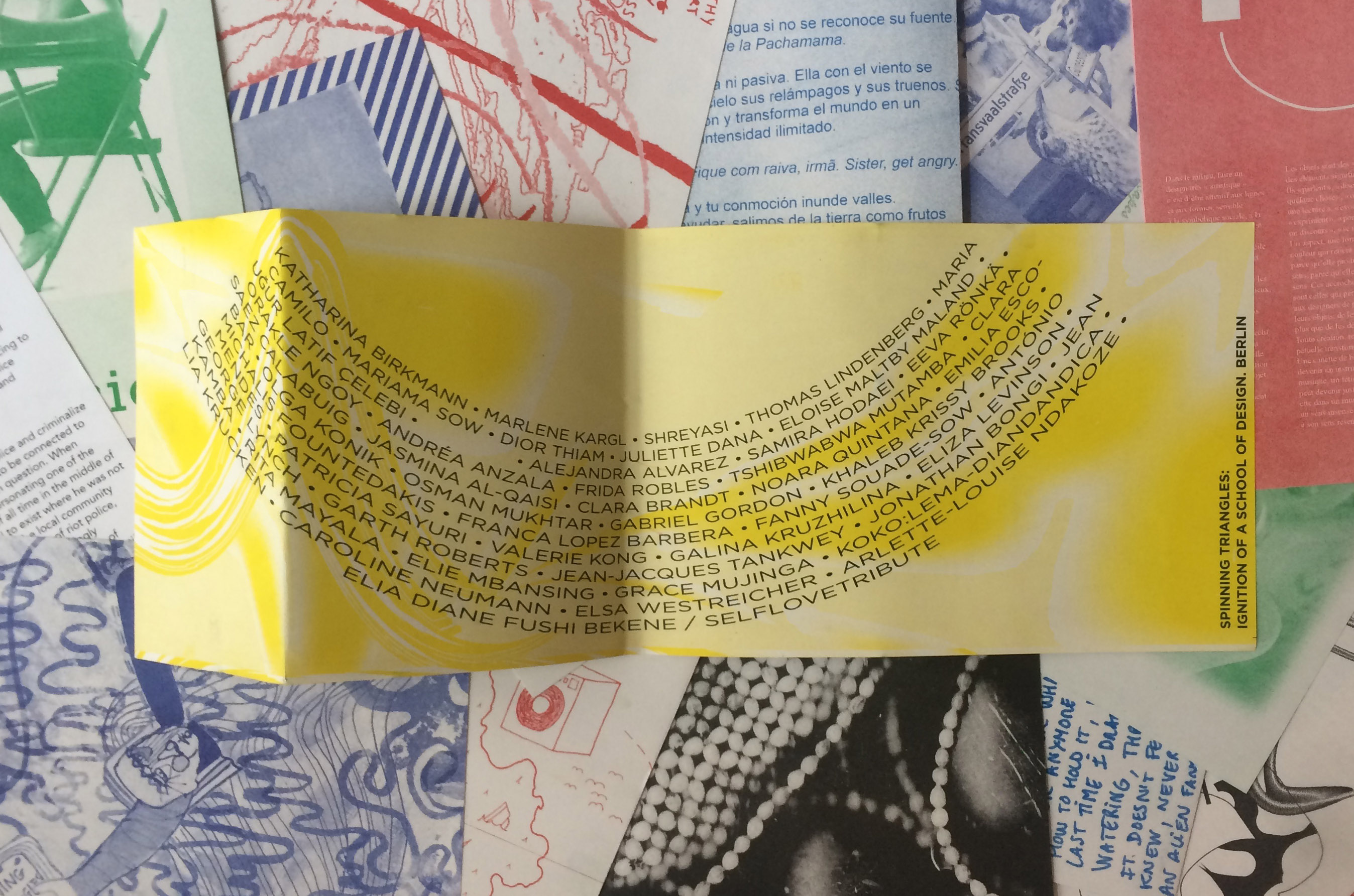

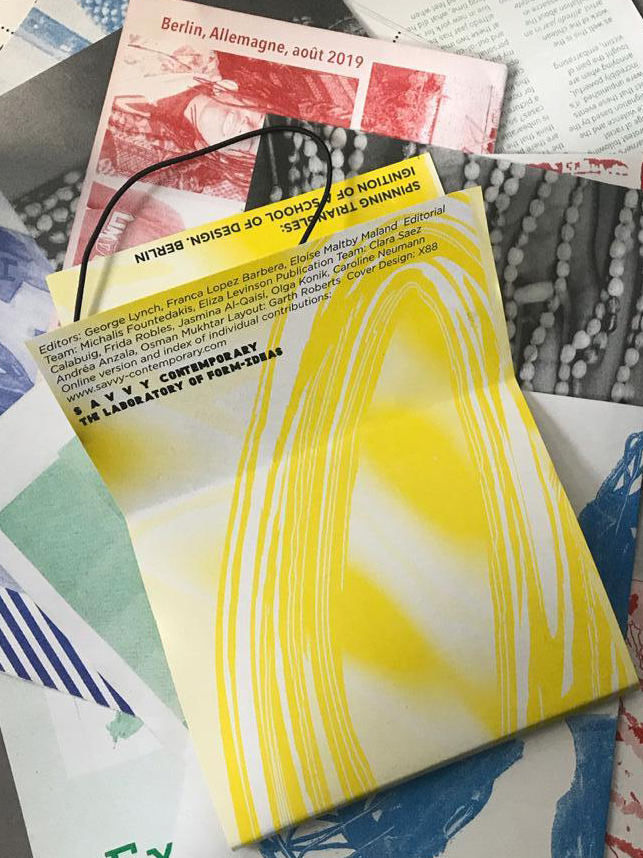
*If the image looks all pixelated, just grab and move the edge of your browser window like you're resizing it, and it'll fix itself.
Publication, August 2019. Only edition of 150 copies. Riso printed by We Make It, Berlin for SAVVY Contemporary – The Laboratory of Form-Ideas, Berlin.
Spinning Triangles was a project from SAVV Contemporary in Berlin seeking to challenge and act against the inherent, neocolonial power structures in design practices, theory, and teaching. This is a collective publication of what happened.
Editors: George Lynch, Franca López Barbera, Eloise Maltby Maland
Editorial Team: Michalis Fountedakis, Eliza Levinson
Publication team: Clara Saez Calabuig, Jasmina Al-Qaisi, Olga Konik, Andréa Anzala
Layout: Garth Roberts
Cover Design: X88
Contributors: Katharina Birkmann, Marlene Kargl, Shreyasi, Thomas Lindenberg, Maria Camilo, Mariama Sow, Dior Thiam, Juliette Dana, Ugur Latif Çelebi, Alejandra Alvarez, Samira Hodaei, Eeva Rönka, Orakle Ngoy, Andréa Anzala, Frida Robles, Tshibwabwa Mutamba, Clara Saez Calabuig, Jasmina Al-Qaisi, Clara Brandt, Noara Quintana, Emilia Escobar, Olga Konik, Ozman Mukhtar, Gabriel Gordon, Khaleb Krissy Brooks, Michalis Fountedakis, Franca López Barbera, Fanny Souade-Sow, António Mendes, Patricia Sayuri, Valerie Kong, Galina Kruzhilina, Eliza Levinson, George Lynch, Garth Roberts, Jean-Jacques Tankwey, Jonathan Bongi, Jean Kamba, Rita Mayala, Elie Mbansing, Grace Mujinga, Koko:Lema-Diandandica, Lia Krucken, Caroline Neumann, Elsa Westreicher, Arlette-Louise Ndakoze, Elia Diane Fushi Bekene / Selflovetribute.

- 2019,
When the Tide Rises

*If the image looks all pixelated, just grab and move the edge of your browser window like you're resizing it, and it'll fix itself.
WHEN THE TIDE RISES
Contribution for Spinning Triangles — Ignition of a School of Design, 2019.
Poem: Franca López Barbera
Image: Pati Sayuri
[en] I am the mother of all humanity. I am Mother Earth, the Pachamama. There is no center; the center is everywhere. There is no beginning or end; the circumference is nowhere. I am the rivers, the trees, the lakes, the animals, the seas, the flowers, the deserts, and the mountains.
The first sip is for Pacha, to whom everything belongs. The soil we step on is water and earth, it is deep and receptive. Water is fertility between the sowing and the harvest. There is no value in connecting with the water if her source is not acknowledged. Water comes from the eyes of the Pachamama.
Water is never neutral or passive. She shakes with the wind and, in the sky, she is lightning and thunder. She overflows in flood and, in a moment of unlimited intensity, she transforms the world .
Enojate, hermana. Rebele-se irmã. Sister, get angry. Fâche-toi, soeur. Let the tide rise and your commotion flood valleys. We’ll all come to help, we’ll come out from the soil like the fruits between the mountains. Take the harvest ‘cause the grass is rotten. Abolish forms, disintegrate dualisms, cross all borders, wipe out everything, and meanwhile we’ll celebrate. Because your storm is a party, and your water cleanses and purifies.
speaks about it.
- 2024, When a Tree Says No: Towards a More-Than-Human Consent Notion for Design. DRS2024: Boston, 23–28 June, Boston, USA.
- 2023, When a Tree Says No: Towards a Consent Framework for Design-Nature Relationships. NERD–New Experimental Research in Design, 4–5 May, Berlin University of the Arts, Germany.
- 2022, Consent for design-nature relationships. Counterparts: Exploring Design Beyond the Human, Swiss Design Network Research Conference, 27–28 October, Zurich University of the Arts, Switzerland.
- 2022, On Sharing and Stone Walls. (Re-)learning the Archive, 8 March, Linnaeus University, Växjö, Sweden.
- 2021, DISEÑO: Thinking the World in Spanish (Panel). Instituto Cervantes & the London Design Biennale, 22 June, London, UK.
- 2021, Deforestation as Epistemicide. Against the Grain, Futuress.
Monte Abierto
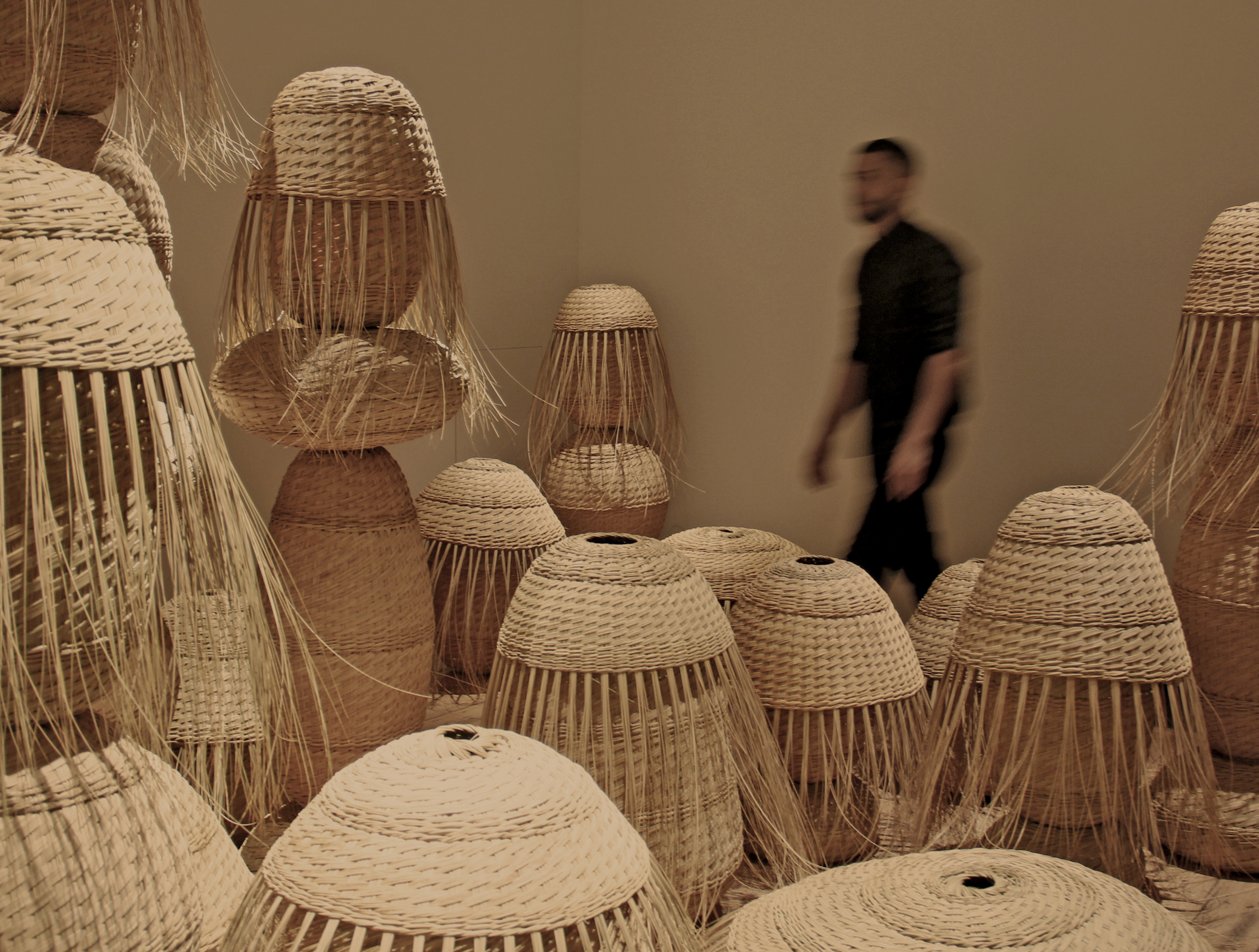
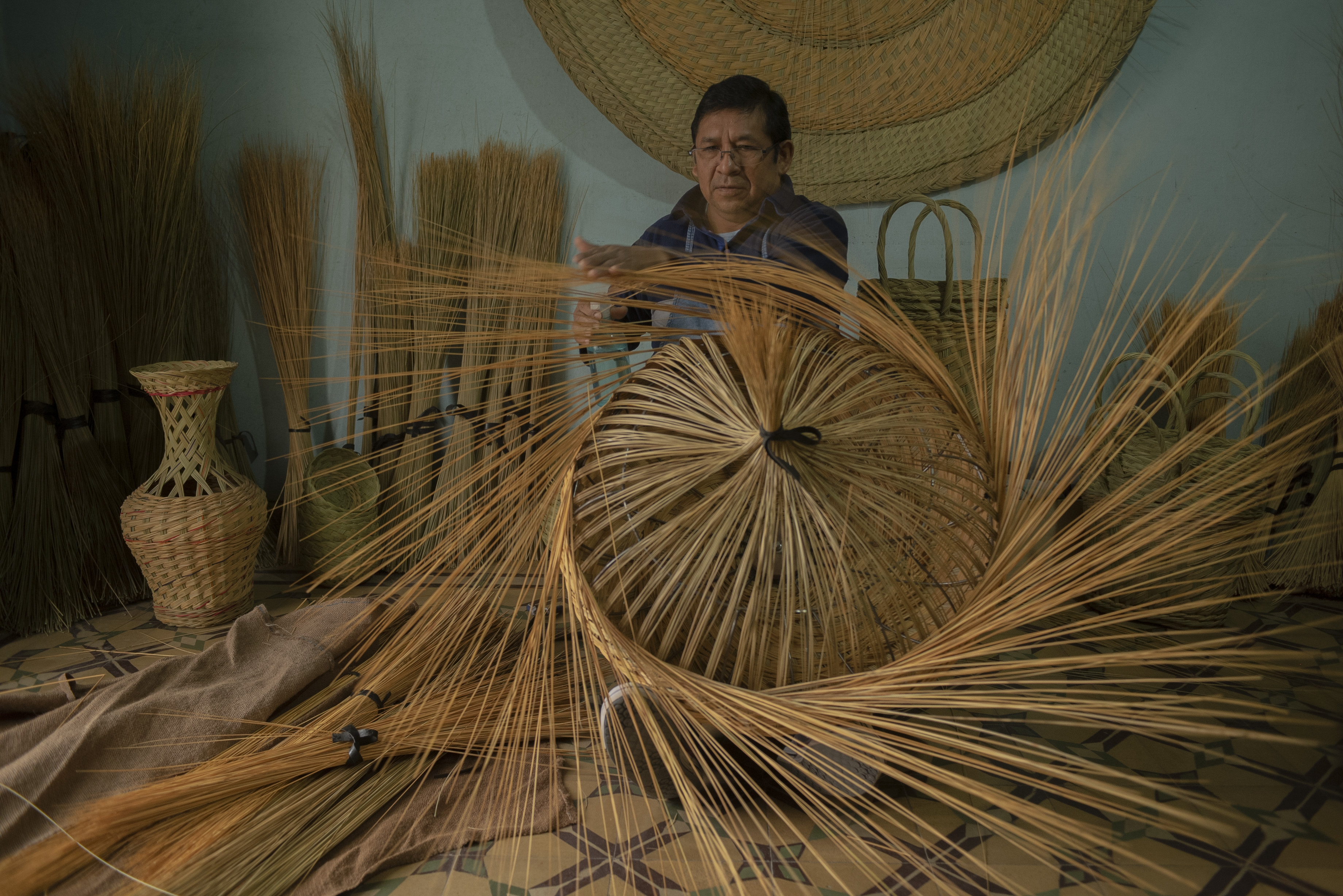
*If the image looks all pixelated, just grab and move the edge of your browser window like you're resizing it, and it'll fix itself.
Monte Abierto is an invitation to experience the making of a shared territory in dialogue. In this installation, the designer Cristián Mohaded examines the resonance of design from his relationship with the artisan Lorenzo Reyes and the Simbol, a plant that grows in the Calchaquí Valleys in Catamarca, a province in the northwest of Argentina, from which both come from.
Between rivers and mountains, shrubs grow wild on the Monte (the bush), forming scattered islands of dense coloured clumps from green to gold; a desert-like landscape of bright clouds and warm rusty sunsets that Lorenzo visits every three months. “Let’s go to the material,” he says, and from this encounter with the Simbol, relationships begin to be woven. For almost a decade, Cristián and Lorenzo maintain a collaborative and experimental practice built upon an ongoing process of making agreements, of forming a common language, and pacts of respect between them, the Simbol, and the Monte.
Simbol is both the plant and the basket weaving tradition of the province of Catamarca. Although Simbol fibres can be cut and woven at any time of the year, in summer they are given over to the cows, horses, and donkeys that come to the Monte to feed on them. In winter, however, the cool wind dries the bright, tender green of the plant into shades of sandy yellow. What’s more, according to the minerals of the soil, red and orange spots can appear on the fibres. For Lorenzo, these are not peripheral details but rather nature setting the pace of his practice — a way of relating to the material as a source of knowledge and as a bearer of the identity of a territory. "Mother Nature offers us everything, we just have to go to the fields and work with our hands," he says. The Simbol thus becomes a technology-memory that stores and transfers a making expertise and a language specific to the Monte. The Monte is, then, not simply a bounded geographical space, but the socio-ethico-material support of the relations that emerge from and within it.
The meeting place for Cristián and Lorenzo is at the border between craft and design. For them, referring to their disciplines as two distinct fields does not represent a rigid division but the possibility of creating (designing) their own making together through the dialogue of their knowledges. Dialogue appears here as a committed technology towards finding a shared vision, a shared language, a shared practice, a shared world. In that sense, design is a situated activity that configures values, ways of relating, identities, and territories. For Cristián, to ground his work to a place echoes as a fundamental principle for a sustainable and respectful practice, as well as a strategy to place design at the appropriate distance and thus amplify its potential towards the creation and coexistence of multiple possible worlds.
Monte Abierto is the bringing forward of a making in which the generation of things happens through the reciprocal and embodied relationship between people, materials, and the forces of nature. In the installation, the objects present themselves as the reflection of their own becoming; a threading that emerges from the polyvocal dialogue between the designer, the artisan, the Simbol, the Monte, the animals, the wind, and the sun. To enter the Monte, then, is not just an invitation to the landscape but to an epistemic orientation and a disposition to see and do things otherwise — a perspective in which the material and the immaterial are mutually constituted.
Monte Abierto is the disclosure of Cristián and Lorenzo’s shared territory and an invitation to their conversation as landscape — a world made through dialogue and a dialogue made world.
Designer: Cristián Mohaded
Artisan: Lorenzo Reyes
Curator: Franca López Barbera
Light Design: Arturo Peruzzotti
Project Team: Josefica Roca, Gonzalo Kaiser, and Franco Chimento
Supporting Bodies: Argentine Ministry of Foreign affair, International Trade, and Worship and The Embassy of Argentina to the UK.
design theory
DESIN IN MANY WORDS: Reading, writing, and talking design across positions and contexts
MA, Winter Semester 26/26
Design is neither singular nor neutral. Yet its mainstream history has often been told as if it were—through universalist, modernist, and human-centred narratives that obscure the multiplicity of perspectives, practices, and struggles shaping it. In reality, design is a situated practice that both shapes and is shaped by the political, economic, and cultural forces of its time. How do different positionalities reflect the complexity of design in the present? And how can we learn to read, write, and discuss design across differences—without erasing them?
Today, a growing set of critical approaches in design research and practice is challenging its modern legacy and Anglo-European biases by introducing alternative roles, ontologies, and epistemologies of design. These perspectives reveal design as a political technology—a field entangled with histories of colonialism, capitalism, racism, patriarchy, and environmental exploitation, yet also a site for imagining and enacting otherwise. This means recognising design’s complicity in systems of oppression and privilege while tracing counter-histories and alternative imaginaries that resist them.
This seminar approaches design as a contested territory, where knowledges and practices are negotiated across geographies, worldviews, and power structures. Through weekly readings, writing, and discussion, we will explore intersections between design and feminist, decolonial, anti-racist, queer, posthuman, and Indigenous perspectives—touching on areas such as design politics, design and gender, decolonising design, pluriversal design, more-than-human design, ontological design, and speculative design. Rather than seeking one “right” definition of design, we will practice recognising its many implications, sharpening our ability to situate ourselves within them and developing the critical and contextual awareness needed to navigate and contribute to design thinking and practice in more accountable, just, and transformative ways.
DESIGNING RELATIONALITY: More-than-human perspectives and practices
BA, Winter Semester 26/26
Wildfires rage, species vanish, and entire ecosystems collapse—yet, much of contemporary design still centres select human needs, reinforcing extractive, market-driven solutions that exploit natures and peoples alike, especially in the Global South. Since its inception, design theory and practice have been governed by rationalist, technocratic, and human-centred perspectives that treat “nature” as something to be fixed, managed, or optimised, always from the outside. But human activities have profoundly shaped the planet, blurring the very boundaries between what we call “natural” and “artificial.” If these categories no longer hold, how must we rethink our ideas of humans, nature, and technology—and, with them, the role of design?
The concept of the more-than-human builds on posthumanist thought, which challenges anthropocentric notions of autonomy and human exceptionalism. Posthumanism recognises that agency is not exclusive to humans but shared among plants, animals, rivers, bacteria, algorithms, satellites, things, materials, etc., all of which co-create the worlds we inhabit. Simply put, more-than-human refers to that which is not only human (it includes and exceeds it) and is constituted by humans and nonhumans and their interactions (e.g., a more-than-human world). While posthumanism critiques modern human/nature, culture/nature, and nature/technology dualisms, more-than-human design brings these insights into practice, expanding design’s scope to include these nonhuman entities not as background, tool, or resources but as stakeholders and active participants in design activities and processes. This approach invites designers to work in ways that acknowledge relationality and interdependence and address the ethical and political implications of such entanglements.
This seminar takes a critical and justice-oriented approach, moving beyond hegemonic modernist frameworks toward more-than-human perspectives in design. Drawing from Indigenous scholars, feminist posthumanities, and decolonial thought, we will explore design as a relational practice within an interdependent world of humans and nonhumans. We will question inherited Western dualisms and investigate how material agency, multispecies relations, and distributed networks of actors shape our social and political realities. What does it mean to design with and for the more-than-human world? How can we reimagine design ethics and politics when agency is shared across humans and nonhumans? How can design attend to the urgent socio-ecological crisis without reproducing the very structures of inequality and exploitation upon which it was built?
THE DESIGN OF NATURE & THE NATURE OF DESIGN
BA, Winter Semester 24/25 and Sommer Semester 2025
What do we mean when we talk about nature? Is it something separate from humans, or is that very distinction itself a product of design? And, what is design, really? Is it something only humans do or a broader process that shapes us back? In this seminar, we’ll dive into these questions by examining the historical conditions and underlying logics that continue to shape prevailing notions of design, nature, and their relation until today. We’ll trace how design developed alongside modern practices that framed nature as a resource to be exploited and transformed through technology. At the same time, we’ll challenge this legacy by considering alternative approaches that honour local, non-exploitative ways of engaging with the natural world.
Design isn’t just about making objects, experiences, or environments; it’s a world-making activity that configures our values, ways of being and relating. Far from neutral, modern design built on the idea of commanding nature to serve capitalist modes of production, reducing it to a mere commodity. Yet, “nature” is not a fixed, objective reality; it’s a concept historically shaped by patriarchal and colonial interests. The climate breakdown and today’s conflicts over resources reflect deeper clashes between different ways of understanding and relating to nature: between those who treat it as an exploitable object and those who view it as a living, active subject with which we can build reciprocal relationships.
Departing from an ontological perspective of design, this seminar will unpack these tensions by drawing from ecofeminism, decolonial theory, Indigenous thought, and feminist posthumanisms. We’ll critically examine how power, gender, and race have shaped (and continue to shape) design’s relationship with nature—and imagine how it could be otherwise.
other realms of design,
designing for fashion labels Alexander McQueen, Prabal Gurung and developingproducts and materialities
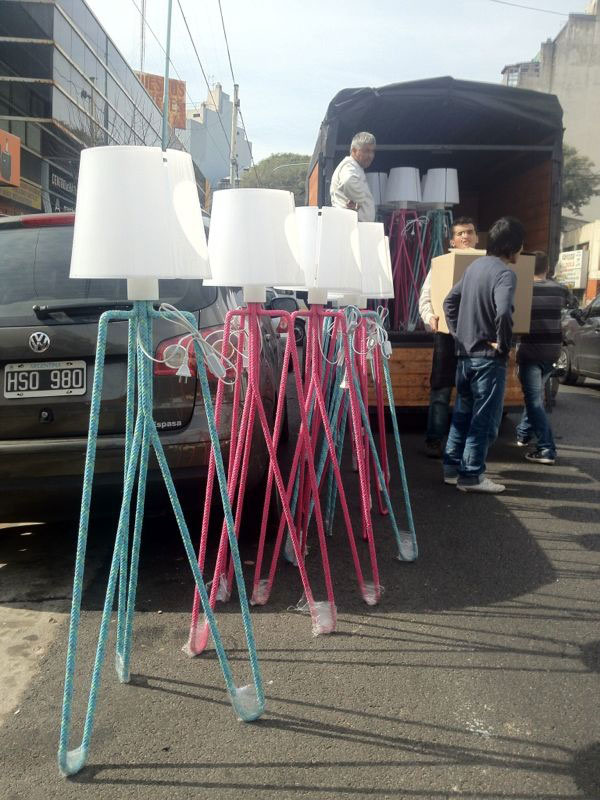
exhibited her works,

artists



MSc. in Design Research
